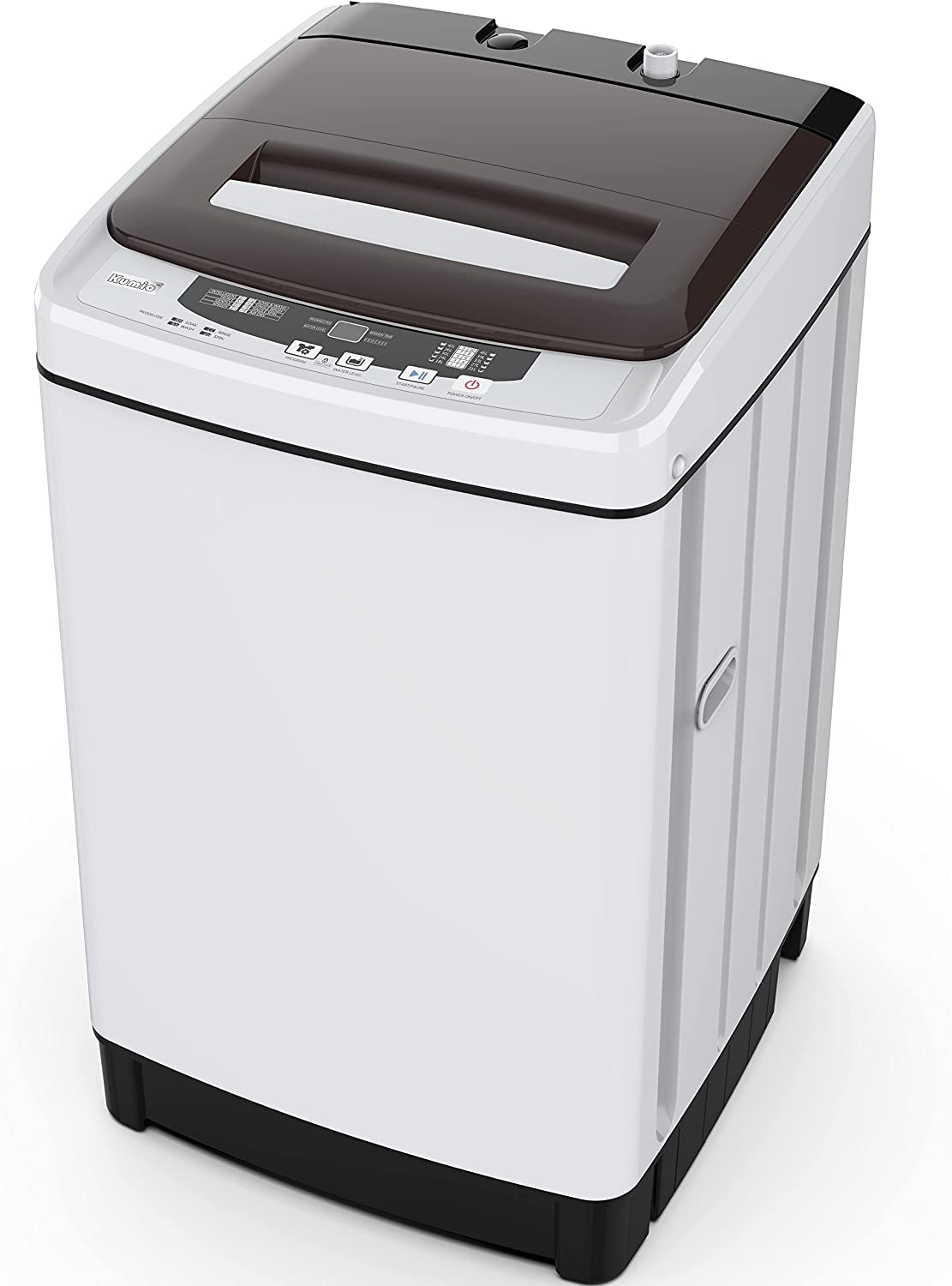Safely Draining Your Washing Machine for a Stress-Free Move
Moving to a new home can be an exciting adventure, filled with anticipation and new beginnings. However, it can also be a source of stress and anxiety, especially when it comes to the logistical challenges of moving heavy appliances like a washing machine. One crucial aspect that often gets overlooked is the proper draining of your washing machine before the move. Failure to do so can result in unwanted water damage, potential mold growth, or even damage to the machine itself.
In this comprehensive guide, we will delve into the importance of safely draining your washing machine before you relocate. We will take you through a step-by-step process, equipping you with valuable knowledge and practical tips to ensure a stress-free move. By following these guidelines, you can protect your belongings and ease your mind during this transitional period.
 Why Draining Your Washing Machine Safely is Essential for a Stress-Free Move
Why Draining Your Washing Machine Safely is Essential for a Stress-Free Move
Moving to a new home can be an exciting but overwhelming experience. Amidst the chaos of packing and organizing, it’s easy to overlook seemingly small tasks like properly draining your washing machine. However, neglecting this crucial step can lead to disastrous consequences and turn your move into a nightmare.
Imagine arriving at your new home, eager to set up your laundry area, only to find that water has leaked from the washing machine during transit. Not only would you be faced with the hassle of cleaning up the mess, but you might also have damaged flooring or furniture. By taking the time to drain your washing machine safely before moving, you can avoid such mishaps and ensure a stress-free transition into your new abode.
The Importance of Properly Emptying a Washing Machine Before Moving
When it comes to the daunting task of moving your washing machine, there is one crucial step that you simply cannot afford to overlook – properly emptying the machine of water. Failing to do so can have disastrous consequences, resulting in damage to your appliance, your property, and even your sanity. Therefore, it is imperative that you understand the importance of this often forgotten yet essential step.
Picture this: You’ve meticulously packed up your entire house, organized every detail of the move, and just when you think you’re ready to go, disaster strikes. As you lift the heavy washing machine onto the moving truck, water unexpectedly splashes out from every direction. Panic sets in as you realize that not only have you potentially ruined your beloved appliance but also caused water damage to your floors and belongings.
This nightmarish scenario could easily be avoided by taking a few extra minutes to properly drain your washing machine before embarking on your move. By doing so, you are not only protecting yourself from potential damage but also ensuring a smooth and stress-free relocation experience.
Understanding the Risks of Moving a Washing Machine with Water Inside
Moving can be a hectic and challenging process, requiring careful preparation to ensure a smooth transition. When it comes to relocating your washing machine, it is crucial to understand the risks associated with moving it while water remains inside. Neglecting to properly drain your washing machine can lead to potential damages and unwanted complications.
Imagine the chaos that could ensue if you were to transport your washing machine without removing the water from its drum. The excess weight caused by the retained water could strain the delicate internal components, potentially leading to irreparable damage or even a complete breakdown of your beloved appliance. Additionally, allowing water to slosh around during transportation raises the risk of leaks and spills that can ruin your flooring or damage nearby items.
The Step-by-Step Process to Draining Water from Your Washing Machine
Draining the water from your washing machine may seem daunting, but with a systematic approach, it can be accomplished smoothly. By following these detailed steps, you can ensure that your washing machine is properly emptied before moving, minimizing the risk of water damage and making your move stress-free.
Step 1: Disconnecting Power and Shutting Off Water Supply
Begin by unplugging your washing machine from the power outlet to avoid any electrical hazards during the draining process. Next, locate the shut-off valves for both hot and cold water supply lines. Turn each valve clockwise to shut off the flow of water into the machine. This step is crucial to prevent any leaks or further water accumulation while you work.
Step 2: Preparing the Drain Hose for Proper Water Disposal
Locate the drain hose at the back of your machine and ensure it is positioned above ground level or in a designated drainage area. Take extra care to secure it in place using zip ties or clamps if necessary. By directing where the expelled water will go, you eliminate potential messes and keep things organized during this process.
Step 3: Emptying the Washing Machine Drum of Water
To empty excess water from your washing machine drum efficiently, maneuver it gently forward to create a slight tilt towards the front. Place a bucket or large container under the front part of the drum where there is usually an access cap or filter cover. Gradually unscrew this cap allowing residual water to flow out steadily into your receptacle.
Gathering the Necessary Tools and Supplies for Draining Your Washing Machine
Preparing to drain your washing machine requires having the right tools and supplies at hand. By ensuring you are properly equipped, you can streamline the draining process and avoid any unnecessary complications. Here is a comprehensive list of items you will need:
- A pair of sturdy work gloves: Protect your hands from potential sharp edges or debris.
- An adjustable wrench: This versatile tool will come in handy for disconnecting hoses.
- Buckets or containers: You’ll need these to collect water during the draining process.
- Towels or rags: Have absorbent materials nearby to clean up any spills promptly.
- A screwdriver (if required): Some washing machines may have specific screws for hose detachment.
- A utility knife or scissors: These will help with cutting zip ties or removing clamps, if necessary.
Gathering these essential tools and supplies beforehand ensures that you will have everything readily available when it’s time to drain your washing machine. Being well-prepared not only saves you valuable time but also instills a sense of confidence as you embark on this important task, knowing that success is within reach!
Step 1: Disconnecting Power and Shutting Off Water Supply
Before diving into the process of draining your washing machine, it is crucial to ensure your safety and prevent potential water damage. The first step involves disconnecting power and shutting off the water supply to your machine.
To start, unplug your washing machine from the electrical outlet. This simple action will eliminate any risk of electric shocks or accidents during the draining process. Remember, safety should always be a priority!
Next, locate the water supply valve connected to your washing machine. Typically, you’ll find this valve near the back of the appliance. Turn it clockwise until it is tightly closed. By doing so, you cut off the flow of water into your machine, preventing any unwanted leaks or mess as you proceed with emptying it.
Remember to take a moment to appreciate this small act of precaution—it sets the tone for a smooth and stress-free moving experience!
Step 2: Preparing the Drain Hose for Proper Water Disposal
Now that you have disconnected the power and shut off the water supply, it’s time to focus on preparing the drain hose for proper water disposal. This step ensures efficient and mess-free drainage, reducing any potential damage or inconvenience during your move.
Begin by locating the drain hose at the back of your washing machine. Carefully detach it from both the machine and the drainage point, making sure to have a bucket or basin ready to catch any residual water. Remember, every drop counts! Once detached, inspect the hose for any kinks or clogs that may hinder water flow. Clear any obstructions gently with a long brush or by running water through it.
Next, position your drain hose securely over a floor drain or into a large container that can handle the amount of water in your machine. Ensure there is no slack in the hose that could cause it to dislodge during draining. By taking these simple but crucial steps, you’re guaranteeing a smooth and hassle-free process.
Step 3: Emptying the Washing Machine Drum of Water
Now that you have successfully prepared your washing machine for drainage, it’s time to tackle the task of emptying the drum of water. Remember, ensuring a thorough removal of all water is crucial to avoid any potential damage or leaks during the moving process.
To empty the drum, you will need to locate the drain hose. This hose is typically connected to the back of your washing machine and extends into a nearby utility sink, drainpipe, or even outdoors. Carefully detach the hose from its current position and place a bucket or basin beneath it to catch any water that may flow out.
Next, gently remove any clips or clamps securing the hose in place and allow gravity to do its work. Gradually lower the end of the hose into your container while maintaining control over its movement. As you do so, you will notice water flowing out steadily. Remain patient during this process as it may take some time for all remaining liquid to drain completely.
Once no more water is coming out from the drum, carefully disconnect and remove the drain hose from both ends. Take a moment to inspect it for any clogs or debris that might have accumulated over time; clearing them away will help maintain optimal functionality.
Step 4: Checking for Hidden Water and Ensuring Complete Drainage
As you progress in draining your washing machine, it is crucial to thoroughly check for any hidden water that may still be lurking inside the appliance. Even a small amount of residual water can cause damage during transport and lead to unpleasant surprises upon arrival at your new home.
Start by carefully inspecting the interior of the machine. Pay close attention to the drum, gasket, and detergent dispenser compartments. Use a flashlight if needed to spot any lingering moisture. Additionally, examine the drain hose connection points and ensure there are no leaks or drips.
To ensure complete drainage, gently tilt your washing machine forward, allowing any remaining water to flow towards the back. This simple act can help dislodge hidden pockets of water that may have accumulated in hard-to-reach corners. Take your time with this step as it significantly reduces the risk of transporting a damp washing machine.
Step 5: Cleaning and Drying the Washing Machine Before Moving
Now that you have successfully drained the water from your washing machine, it is important to ensure that it is thoroughly cleaned and dried before your move. By taking the extra time to clean and dry your machine, you not only prevent any potential odors or mildew growth but also maintain its pristine condition for future use.
To start, mix a solution of equal parts water and white vinegar in a spray bottle. Gently remove the detergent dispenser drawer, fabric softener compartment, and any other removable parts from the machine. Place them in a sink filled with warm soapy water and scrub them clean with a sponge or brush. Then, using the vinegar solution, spray down the inside of the drum, agitator (if applicable), and rubber gasket.
The Benefits of Taking the Time to Properly Drain Your Washing Machine
Properly draining your washing machine before a move may seem like an additional task in an already busy time, but the benefits far outweigh the effort. By taking the time to complete this essential step, you can ensure a smooth and stress-free transition to your new home.
First and foremost, properly draining your washing machine eliminates the risk of water damage during transportation. Imagine arriving at your new abode, excited to start fresh, only to find that your precious belongings have been soaked in water due to a neglected washing machine. By following the proper drainage process, you safeguard not only your washing machine but also all other valuables during transit.
Conclusion
In conclusion, taking the necessary steps to safely drain your washing machine before a move is crucial for a stress-free transition. By following the step-by-step process outlined in this article, you can ensure that your washing machine is properly emptied of water and ready to be safely transported. Not only does this minimize the risk of water damage during the move, but it also allows you to start afresh in your new home with a clean and functioning appliance. So, embrace this opportunity to showcase your organization skills and safeguard your belongings – you’ll be one step closer to a smooth and successful move!






